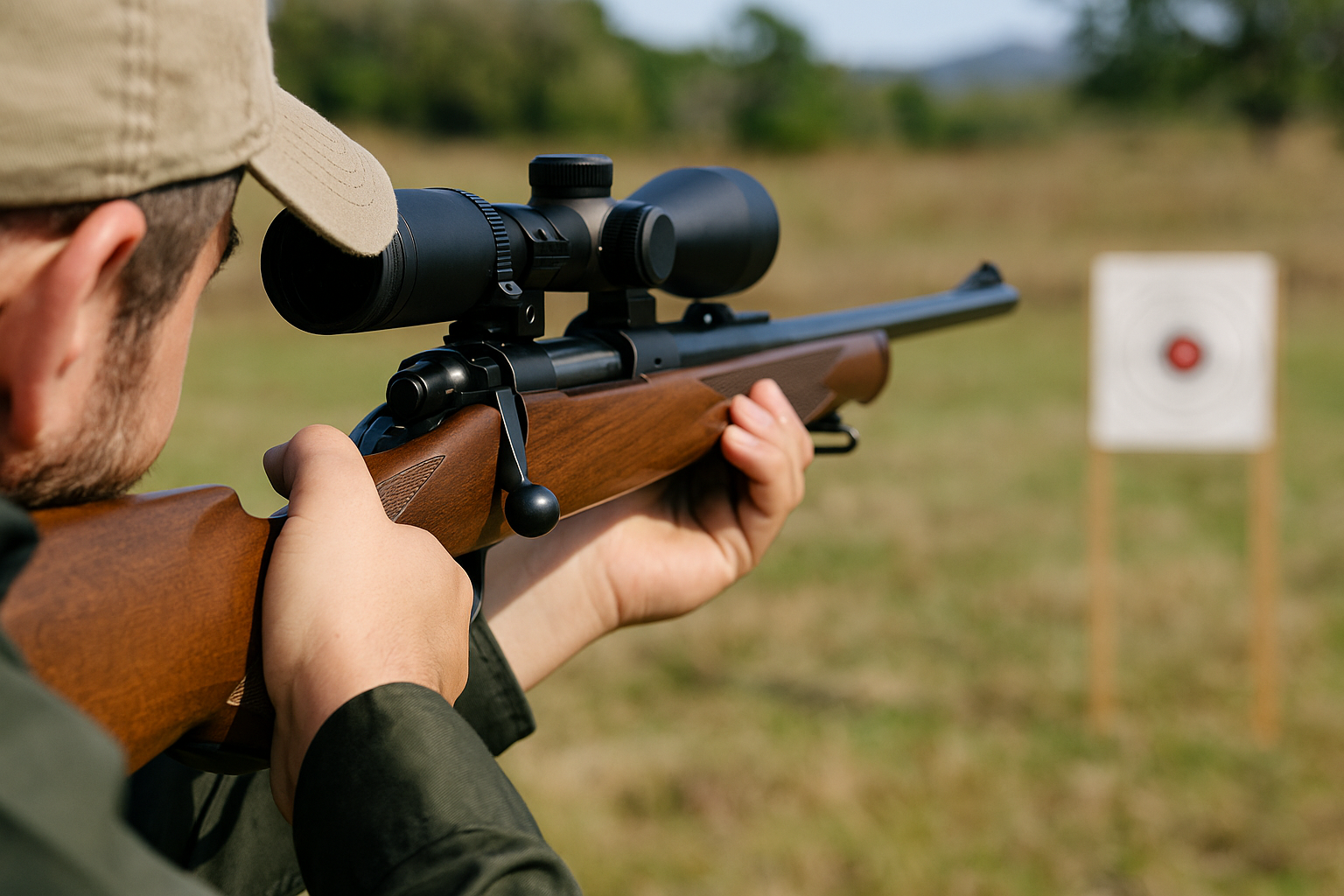The Marlin MR7 is a trusted bolt-action rifle, widely favored for its durability, accuracy, and reliability in the field. But to get the best performance from it, proper sighting is essential. A well-sighted rifle ensures every shot lands where it’s aimed—vital for both precision shooting and ethical hunting.
This comprehensive guide will walk you through exactly how to sight in your Marlin MR7. Whether you’re brand-new to firearms or an experienced marksman, this step-by-step method will help you dial in accuracy and confidence.
What Is the Marlin MR7?
The Marlin MR7 is a bolt-action hunting rifle chambered in .30-06 Springfield. Known for its solid build and straightforward operation, the MR7 features a walnut or synthetic stock, adjustable iron sights, and is pre-drilled for mounting a scope.
Its combination of power, reliability, and customization potential makes it a popular choice for deer, elk, and similar game. Since it can be used with either factory iron sights or aftermarket optics, learning how to properly zero both setups is key.
What Does “Sighting In” Mean—and Why It Matters
Sighting in, or zeroing, is the process of aligning your rifle’s sights or scope with the actual point of bullet impact. In short: when your crosshairs or sights are on the bullseye, your bullet should land there, too.
A poorly sighted rifle leads to missed targets, wounded game, and wasted ammo. Whether hunting or target shooting, accurate sighting ensures clean, predictable shots. Most shooters start at 25 yards for rough alignment, then move to 100 yards for a final zero.
How to Sight in a Marlin MR7
Step 1: Gather Your Gear
Before heading to the range, make sure you bring:
- Cleaned and inspected Marlin MR7
- Ammunition (use the exact type you’ll shoot regularly)
- Mounted scope or factory iron sights
- Bore sight (optional)
- Sandbags or a sturdy shooting rest
- Paper targets and a permanent marker
- Adjustment tools (screwdrivers or wrenches)
- Spotting scope or binoculars (for checking groupings)
Step 2: Choose the Right Range Setup
Head to a range with solid benches and enough space to shoot at 25 and 100 yards. Start at 25 yards to establish initial impact.
Use a sandbag or rest to steady your rifle and minimize human error. A stable shooting platform is critical for consistent, accurate results.
Step 3: Bore Sight (Optional but Recommended)
Remove the bolt and look directly down the bore to visually center the bullseye. Then, without moving the rifle, adjust your scope’s crosshairs to match.
This step gets you “on paper” before live-fire. While optional, it can save both time and ammo by preventing wild first shots.
Step 4: Fire a 3-Shot Group at 25 Yards
From a rested position, load three rounds and fire slowly and consistently. Focus on using the same aim point and smooth trigger pull for each shot.
Check your group’s location. A tight group—even if off-center—means your rifle is performing consistently and just needs adjustment.
Step 5: Make Adjustments to Scope or Sights
Use your shot group as a reference and adjust windage (left/right) and elevation (up/down). At 25 yards, a 1/4 MOA scope click moves impact approximately 1/16 inch.
For iron sights, drift the rear sight or adjust elevation screws carefully. Make small adjustments and retest after each change.
Step 6: Move to 100 Yards and Reconfirm
Once zeroed at 25 yards, reposition your target to 100 yards and fire another 3-shot group.
Measure the group, adjust as necessary, and repeat the process. Wind, barrel heat, and environmental conditions can affect impact at this distance—so take your time.
Step 7: Lock In and Record Your Zero
When your group is centered and tight at 100 yards, tighten all mounting hardware. Record your final settings: scope click values, distance, and ammo used.
Having a log helps you return to your zero quickly if your optic is ever removed or reset.
Additional Tips for Sighting in the MR7
- Always use the same type and brand of ammo during sight-in.
- Clean your barrel between groups if fouling builds up.
- Let the barrel cool between shots to prevent heat-induced errors.
- Focus on group center—not individual outliers—when adjusting.
- Ensure your scope is level and securely mounted.
Common Mistakes to Avoid
- Unstable shooting position: A wobbly rest ruins shot consistency.
- Switching ammunition mid-process: Bullet weight and powder load affect accuracy.
- Rushing shots: Haste leads to heat buildup and shooter fatigue.
- Skipping bore sighting: While not mandatory, it dramatically speeds up alignment.
Avoiding these missteps can dramatically improve your results and save you time at the range.
Conclusion
Sighting in a Marlin MR7 is a crucial skill that boosts your accuracy, confidence, and effectiveness whether in the field or at the range. With patience, proper gear, and the steps outlined above, you’ll get dialed in with ease.
Take your time, aim with care, and always make safety your top priority. Once your MR7 is properly zeroed, you’re ready for a rewarding and precise shooting experience.
FAQs
What distance should I zero my Marlin MR7 at?
Begin at 25 yards for rough alignment, then finalize your zero at 100 yards—ideal for most hunting applications.
Do I need to bore sight with factory iron sights?
Not necessary, but useful when installing a new scope or sight.
Can I use a bipod instead of a sandbag?
Yes, though sandbags generally provide more stability when zeroing.
My rifle is still shooting off—what should I check?
Inspect scope rings and base screws for tightness. Confirm consistent ammo and watch your shooting form.
Do I need to re-zero if I switch ammo?
Absolutely. Even small changes in grain weight or brand can shift your point of impact.









